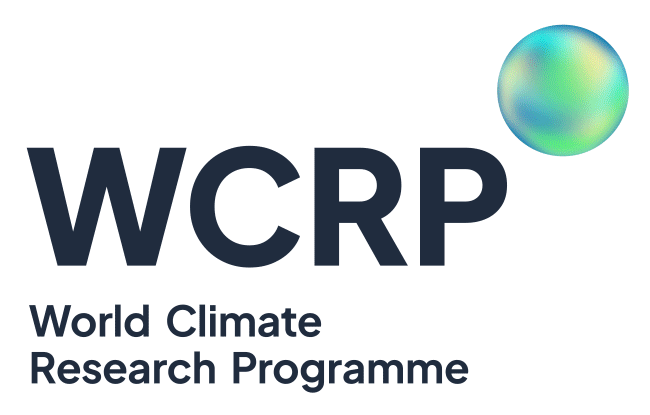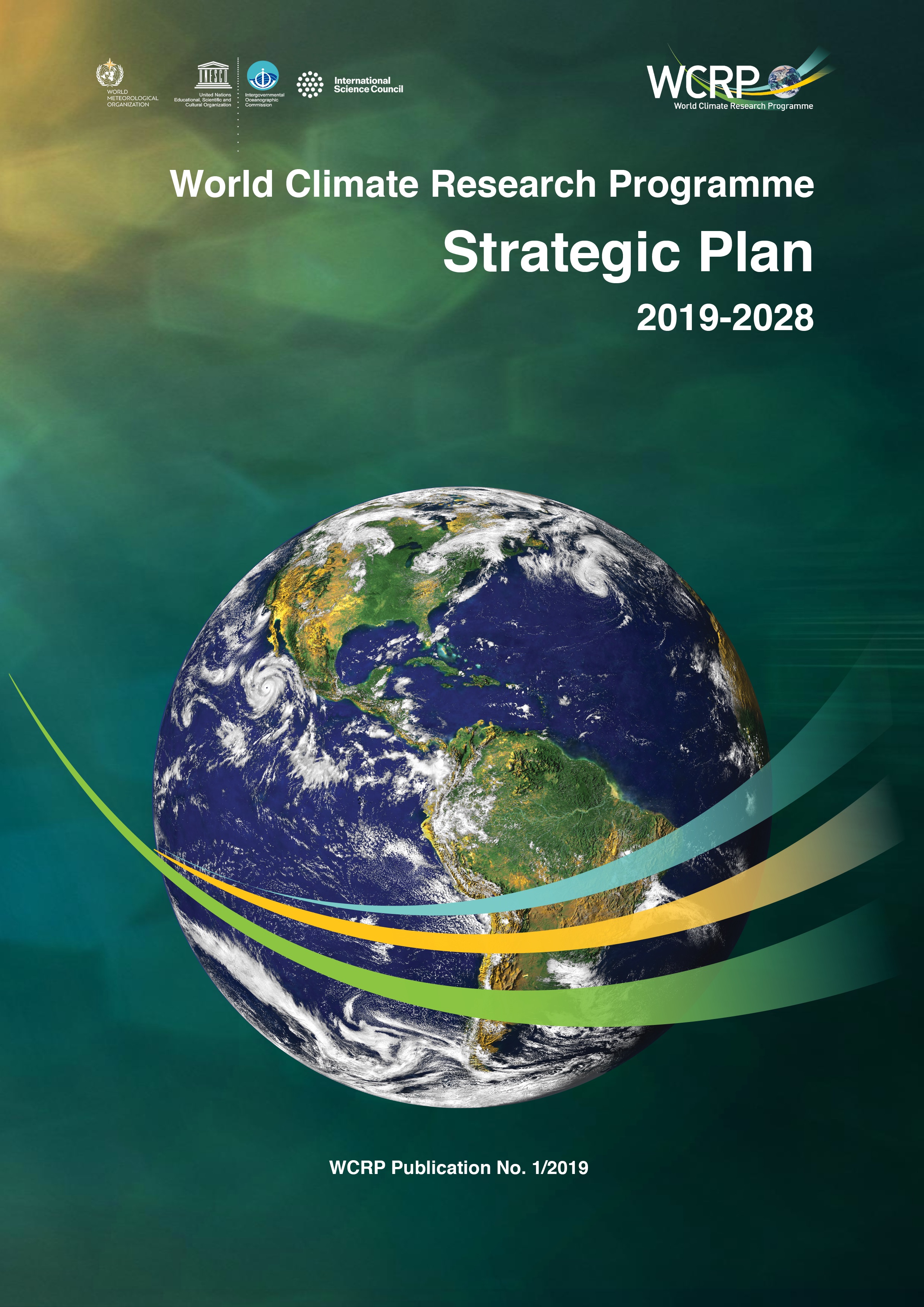In 2019, the WCRP Joint Scientific Committee and WCRP's three co-sponsors approved a new WCRP Strategic Plan.
The WCRP Strategic Plan 2019—2028 outlines the following:
Our Vision
A world that uses sound, relevant, and timely climate science to ensure a more resilient present and sustainable future for humankind.
Our Mission
The World Climate Research Programme (WCRP) coordinates and facilitates international climate research to develop, share, and apply the climate knowledge that contributes to societal well-being.
The vibrant WCRP research community is geographically, disciplinarily, culturally, and socially diverse. Training, capacity building, higher education, and facilitated collaboration are of paramount importance to sustain and grow this community, particularly through opportunities for early career, underrepresented, and developing country researchers.
Joint strategic planning, joint execution of coordinated experiments, and the sharing of data and information require a well networked research community. Furthermore, our mission to facilitate science in support of society demands broad enabling of natural-social science collaborations and globally coordinated citizen science.
Open engagement with civil society, governments, and the private sector – across regions and in United Nations processes, programs, and activities – is central to the activities conducted by WCRP. Effective communication of scientific advancements, with a variety of stakeholders, is also key, as are high-level and vigorous research dialogues through widely inclusive and open science conferences.
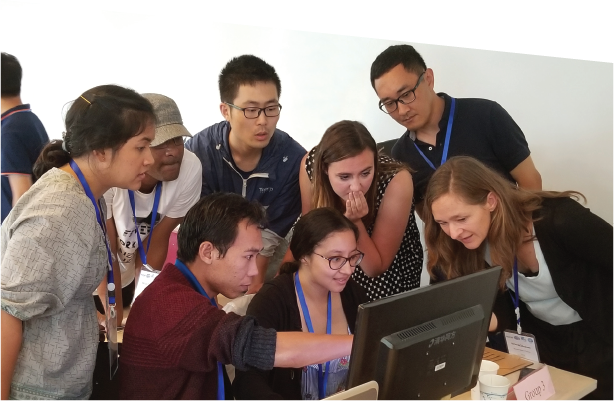
Image: CLIVAR 2018 Summer Course on Sea Level Change, Qingdao, China.
To advance our fundamental understanding of the climate system, deliver meaningful guidance in support of regional and global climate prediction, support multilateral conventions and frameworks, and improve the usability and use of climate science across all space and time scales, WCRP proactively collaborates with regional and global research and operational groups, observational coordination bodies, national academies, and scientific associations.
Our partners include, but are not limited to, the Global Climate Observing System; the Global Ocean Observing System; the Group on Earth Observations and national space agencies; the World Weather Research Programme and the Global Atmosphere Watch of the World Meteorological Organization; Future Earth and its contributing projects and Knowledge Action Networks; the Global Carbon Project; sections and programmes of the Intergovernmental Oceanographic Commission; International Science Council member groups; the Belmont Forum; the United Nations Framework Convention on Climate Change; and national funding agencies.
WCRP will continue to sustain the scientific basis for the work of the Intergovernmental Panel on Climate Change and enhance support for the activities of weather and climate services and the efforts of the Global Framework for Climate Services. New opportunities will be explored for the co-production of project design and outcomes that are directly relevant to policy and decision makers.
For almost 40 years WCRP has been a leading initiative dedicated to coordinating international climate research. The integral role of WCRP in developing knowledge of the climate system and our understanding of climate variability and change has been achieved as a result of the efforts of the international scientific community organized through core projects (CLIC, CLIVAR, GEWEX, SPARC), major initiatives (CORDEX, CMIP), working groups, grand challenges, and other activities.
These efforts have transformed our understanding of the climate as a system and enabled us to predict near-term climate variability and anticipate the future trajectory of the system. This work has contributed fundamentally to the conclusion that human activities are responsible for the majority of the observed global climate change since the mid 20th century.
Society requires decision-relevant, evidence-based climate information to support mitigation strategies and adaptation choices. It therefore needs to address the challenges created by the pace of climate change and the emerging risks associated with climate extremes and hazards, which are being exacerbated by climate change. This climate information is based on new knowledge along with improved observations, process understanding, robust predictions, and scenarios of climate change, produced at increasingly fine spatial resolutions and over a wide range of timescales. While there are key scientific gaps, there are also new opportunities to advance scientific understanding through strategic partnerships. The fundamental climate science that has underpinned past achievements, embodied by disciplinary and interdisciplinary rigor, must now be further extended and applied in order to meet these new demands.
The next decade will bring challenges that can only be addressed through a worldwide coordinated effort conducted by a prepared scientific workforce. This effort must be supported by strong global partnerships. The task is formidable: not only is it scientifically and technically complex, but it also needs to be informed by societal needs at every level from local to global. However, there are clear opportunities: to develop new partnerships for research and operations, to promote exciting observational and computational technologies, to develop scientific capacities and collaboration across the globe, and to improve the cost-effectiveness of future investments in support of resilience and preparedness, mitigation and adaptation. To meet these new challenges and opportunities, WCRP has developed this Strategic Plan for the next decade to ensure that climate science provides the information necessary to achieve a more resilient, sustainable, and equitable world.
The terminology used in this Strategic Plan is based on substantial consultation. Of particular importance is an understanding of what we mean by “climate system” and “Earth system” (Figure 1) and their numerical model counterparts – the “Global Climate Model” and the “Earth System Model (ESM)” (Figure 2, see also definitions below). These schematic figures underpin the definitions used in this plan and are consistent with the Intergovernmental Panel on Climate Change Fifth Assessment Synthesis Report (IPCC, 2014).
As there is no generally accepted definition of these important concepts and models, WCRP, as an international research programme that represents the relevant scientific domains, accepts responsibility for developing a clearer definition for the community in the future through a consultation and defining task that will be initiated under the implementation of this Strategic Plan and that will involve our partner programs.
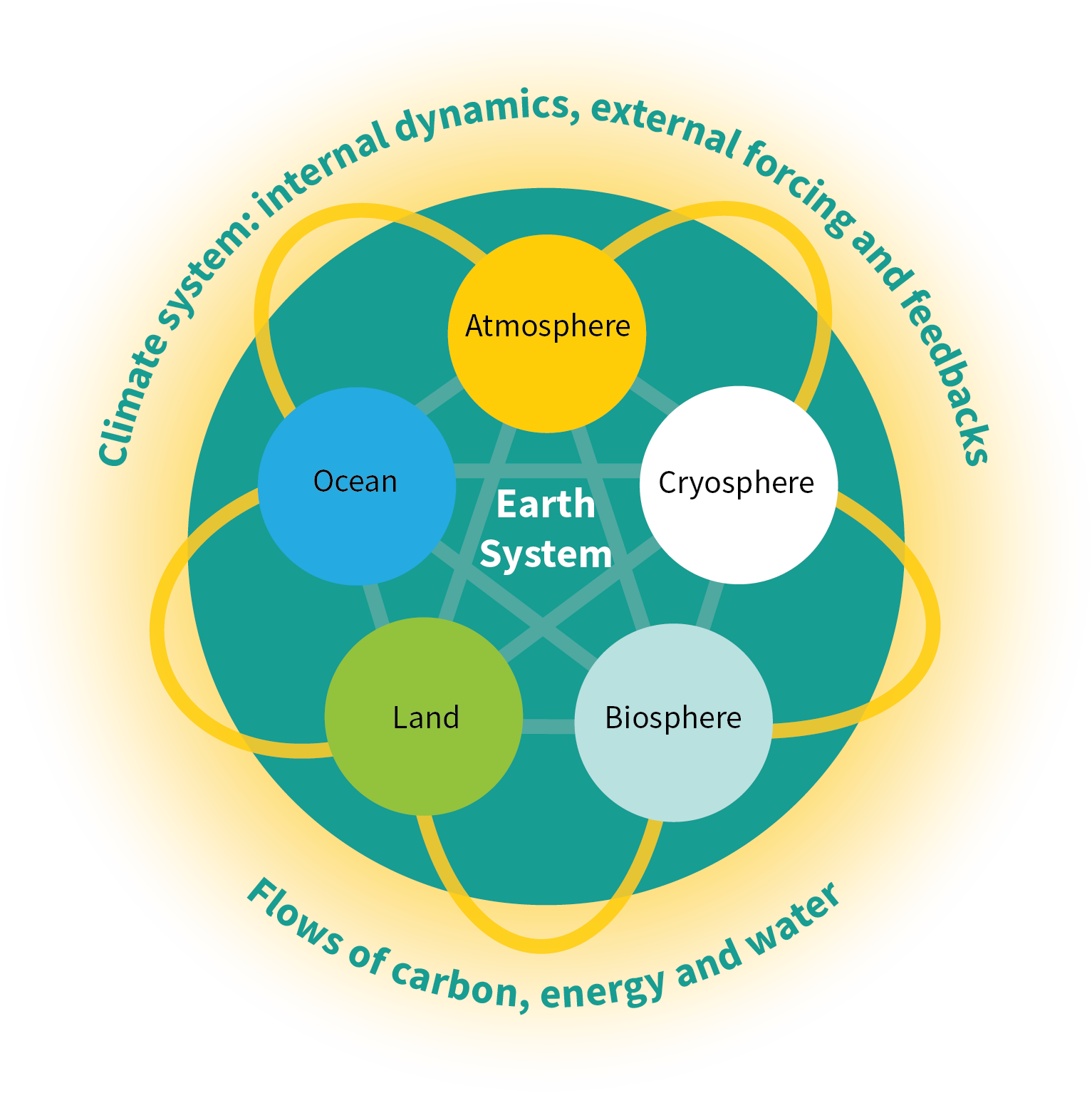
Figure 1: Climate relevant aspects of Earth system science as used in the WCRP Strategic Plan.
- Climate system: The part of the Earth system that is relevant to climate; that is, the atmosphere, ocean, land surface, and cryosphere, their coupling processes and feedback mechanisms.
- Earth system: Earth’s interacting physical, biogeochemical, biological, and human systems, including the land, the atmosphere, the hydrosphere, and the cryosphere.
- Global Climate Model: Represents the physical climate system components and considers biogeochemical and human systems as external forcing or impacts. Historically, these models were restricted to the physical aspects of the atmosphere and ocean.
- Earth System Model (ESM): Represents both the physical climate and the biogeochemical systems and their interactions as a single coupled system. In most ESMs, the human system is external as well as natural forcing (solar and volcanic eruptions).
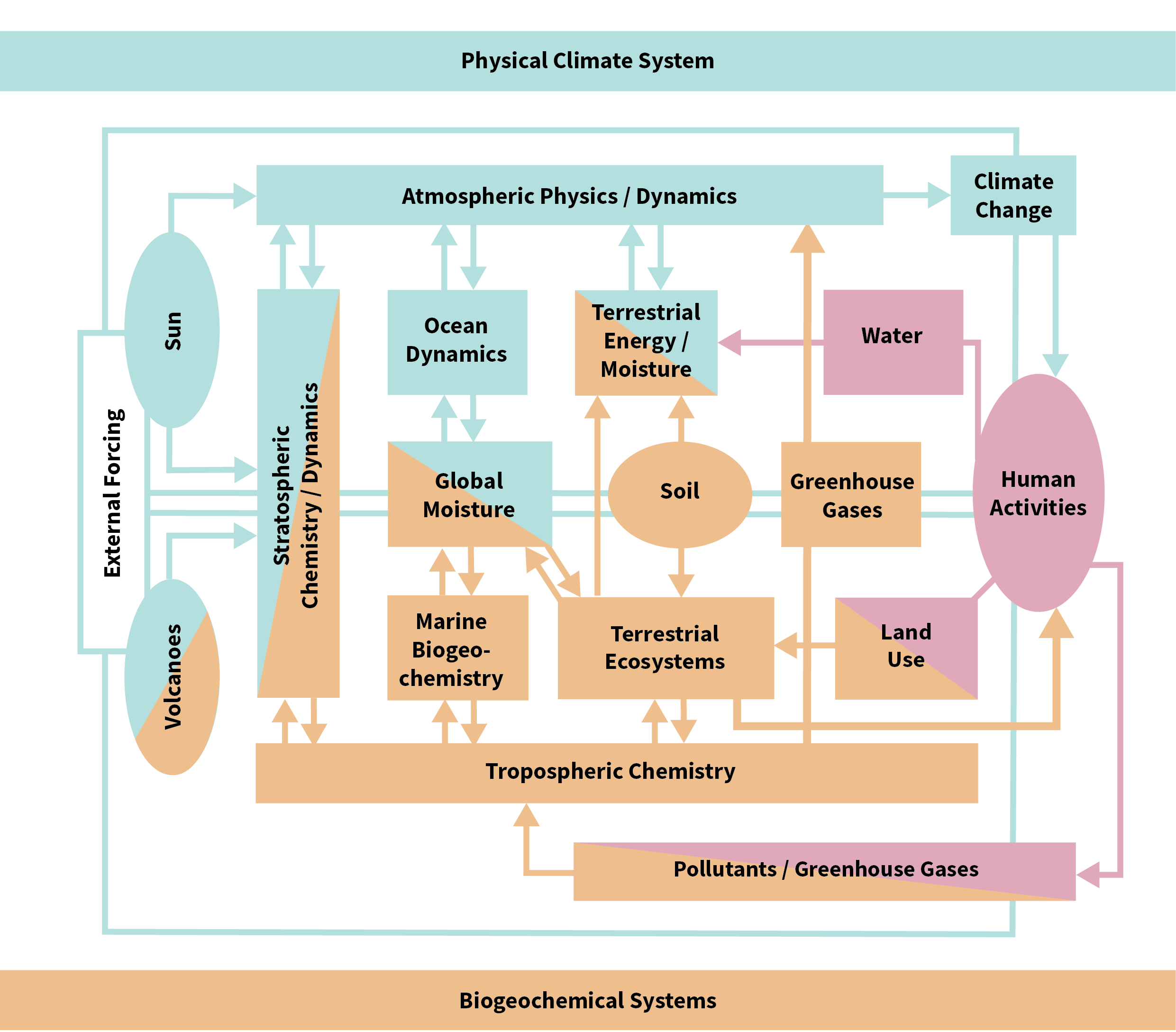
Figure 2: A schematic showing typical models of the physical climate system (in blue) and Earth System Models (orange and blue; but noting that the water component is often included in many contemporary Earth system and global climate models) (after National Research Council,1986).
The WCRP Strategic Plan for the period 2019-2028 is based on four objectives that will underpin the next decade of climate science (Figure 3). As described in our mission (above), these objectives are informed by the most pressing contemporary climate knowledge needs, as well as advancing the core science and capability needed to prepare for the challenges that society cannot yet foresee. These objectives are: (1) to advance fundamental understanding of processes, variations and changes in the climate system; (2) to predict the near-term evolution of the climate system; (3) to refine the ability to anticipate future pathways of climate system change; and (4) to support the development of theory and practice in the integration between natural and social sciences. Through these objectives, WCRP will contribute to progress in the foundations of climate physics and biogeochemistry, in the predictive skill across all climate system components, and in the improvement of simulations of the past and projections of the future.
Understanding the climate system as part of the Earth system is a foundation for meeting our decadal objectives. Earth system evolution is determined through complex interactions between and within the atmosphere, ocean, land, cryosphere, biosphere, and human activities, across space and time scales. Capturing the behavior of the climate system requires a detailed understanding of physical, dynamical, and biogeochemical processes on global and regional scales; of the internal modes of system variability; of the roles of teleconnections and feedback processes; and of the underlying mechanisms leading to extreme meteorological and hydrological events. Furthermore, it requires an understanding of – and insight into – the ways in which the natural sciences (physical, chemical, biological) can be usefully integrated. Indeed, none of these objectives can be achieved without enhancing existing programmes and without facilitating new partnerships to involve social sciences researchers.
- Fundamental understanding of the climate system
- Prediction of the near-term evolution of the climate system
- Long-term response of the climate system
- Bridging climate science and society
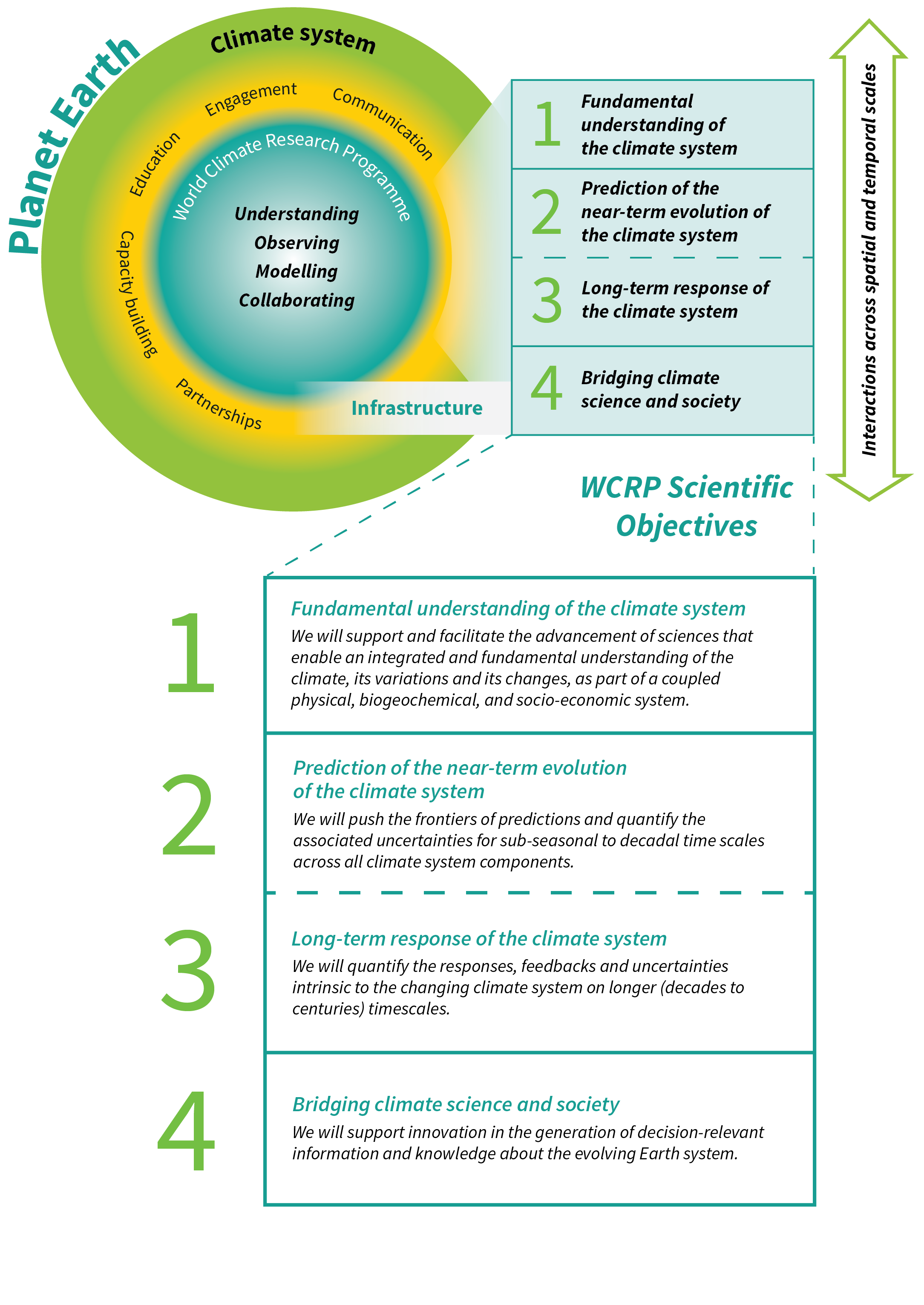
Figure 3: The four Scientific Objectives of the WCRP Strategic Plan 2019-2028 (above) rely on the WCRP community working together to facilitate collaboration and advance understanding, observations, and modeling. WCRP research spans a range of spatial and temporal scales and depends on robust infrastructure to deliver its outcomes. WCRP connects with the wider science community and with a range of stakeholders through partnerships, capacity building, education, engagement, and communication.

Image: Pixabay ID: 2983614.
The infrastructure essential to implementing this plan in the coming decade requires commitment and investment across national and international programs, from the science community, funding agencies, and other partners. Most vital is enhanced support for a WCRP research community which embraces diversity, demands equality, and builds capacity for the future. This support must be interwoven with every implementation blueprint, every scientific activity, and every infrastructure enhancement as we take the Strategic Plan forward.
I. A hierarchy of simulation tools
We require a diversity of modeling and simulation approaches that span a range of complexity, a range of representations of processes, and a range of spatial resolutions, to drive progress and promote direct comparisons between different simulation approaches. Frameworks for model evaluation and uncertainty estimation are required, as is collaboration across model development communities. The potential for seamless and unified simulation tools, adaptive architectures, statistical methods, and machine-based learning is yet to be fully tapped. To advance support of climate services, progress will be further enhanced in dynamical and statistical downscaling tools to better represent regional and extreme phenomena.
II. Sustained observations and reference data sets
The development, collection, analysis, and archiving of multi-variate, multi-scale observations of the climate system is a foundation of climate system research. Sustained observations are needed to capture the evolving climate system. Observations are also critical to understand the climate system and to verify and improve climate simulations. We require well-coordinated international observational field and space-based programs, which have access to the most advanced sensors, platforms, and instruments. The development of synergies between disparate observing systems is critical, as is the characterization of bias and uncertainty in instruments and observational products. In addition, we require the co-design of new observations and indicators, sustained and quality-controlled climate system observational records, and the continuous improvement and timely availability of temporally consistent datasets, such as re-analyses. Common data formats, metadata requirements, and citation standards will improve the accessibility of datasets for all researchers.
III. Need for open access
To best serve stakeholders and to best advance scientific understanding, the global climate research community needs open access to scientific data (observations and model simulations), assessment products, and science results, with appropriate international standards for protecting publication rights, particularly for early career scientists and students. International standards for open access by researchers to publicly funded data collections and archives are critical. WCRP will support efforts to advance such standards and practices.
IV. High-end computing and data management
We require the technology and infrastructure to take advantage of progress in exascale computing and cloud-based systems and software. Technologies for big data, the exploitation of new hardware, improved modeling capabilities, and other computational advances are essential. Interoperable and reliable data management are also required.

Image: CORDEX region (www.cordex.org/domains/cordexregion-mena-cordex) (top), Narelle van der Wel (both middle), iStock ID: 985895696 (bottom).
Acronyms
| CliC | Climate and Cryosphere (WCRP Core Project) |
| CLIVAR | Climate and Ocean – Variability, Predictability and Change (WCRP Core Project) |
| CMIP | WCRP Coupled Model Intercomparison Project |
| CORDEX | WCRP Coordinated Regional Climate Downscaling Experiment |
| ESM | Earth System Model |
| GEWEX | Global Energy and Water Exchanges (WCRP Core Project) |
| GFCS | Global Framework for Climate Services |
| IOC | Intergovernmental Oceanographic Commission of UNESCO |
| IPCC | Intergovernmental Panel on Climate Change |
| ISC | International Science Council |
| SPARC | Stratosphere-troposphere Processes And their Role in Climate (WCRP Core Project) |
| UNESCO | United Nations Educational, Scientific and Cultural Organization |
| UNFCCC | United Nations Framework Convention on Climate Change |
| WCRP | World Climate Research Programme |
| WMO | World Meteorological Organization |
| WWRP | World Weather Research Programme |
References
IPCC, 2014. Annex II: Glossary [Mach, K.J., S. Planton and C. von Stechow (eds.)]. In: Climate Change 2014: Synthesis Report. Contribution of Working Groups I, II and III to the Fifth Assessment Report of the Intergovernmental Panel on Climate Change [Core Writing Team, R.K. Pachauri and L.A. Meyer (eds.)]. IPCC, Geneva, Switzerland, pp. 117-130.
National Research Council, 1986. Earth System Science: Overview: A Program for Global Change. Washington, DC: The National Academies Press. https://doi.org/10.17226/19210.
Full Report: WCRP Strategic Plan 2019—2028
The Strategic Plan development took place from 2017 to 2019. The implementation of the Strategic Plan is currently underway: WCRP Implementation Plan
The World Climate Research Programme (WCRP) mission is to facilitate the analysis and prediction of Earth system variability and change for use in an increasing range of practical applications of direct relevance, benefit and value to society. The two overarching objectives of the WCRP are:
- to determine the predictability of climate; and
- to determine the effect of human activities on climate
The main foci of WCRP research are:
- observing changes in the components of the Earth system (atmosphere, oceans, land and cryosphere) and in the interfaces between these components;
- improving our knowledge and understanding of global and regional climate variability and change, and of the mechanisms responsible for this change;
- assessing and attributing significant trends in global and regional climates;
- developing and improving numerical models that are capable of simulating and assessing the climate system for a wide range of space and time scales; and
- investigating the sensitivity of the climate system to natural and human-induced forcing and estimating the changes resulting from specific disturbing influences.
